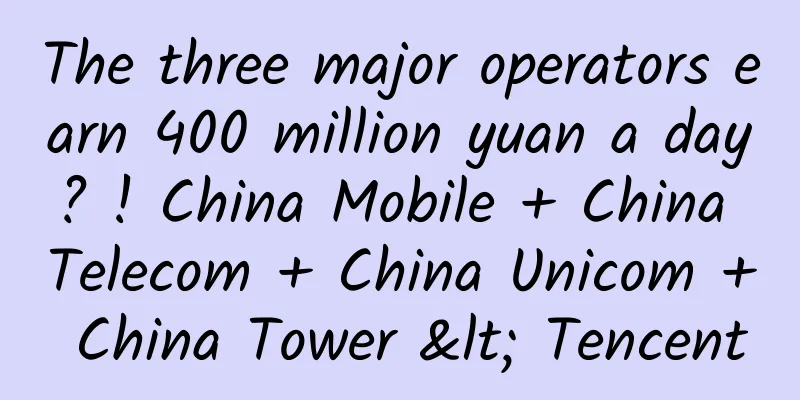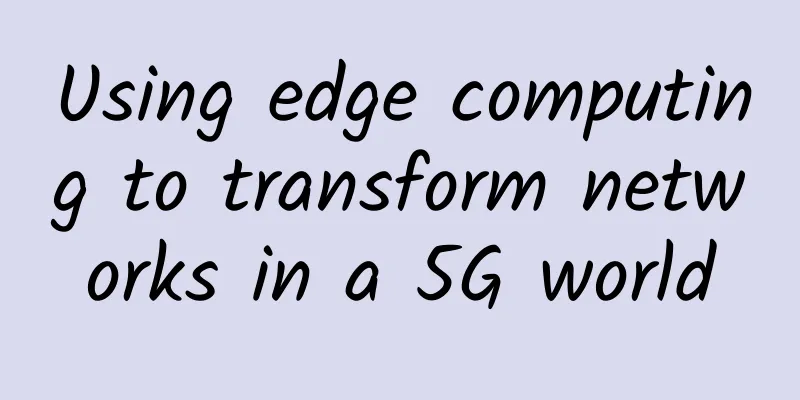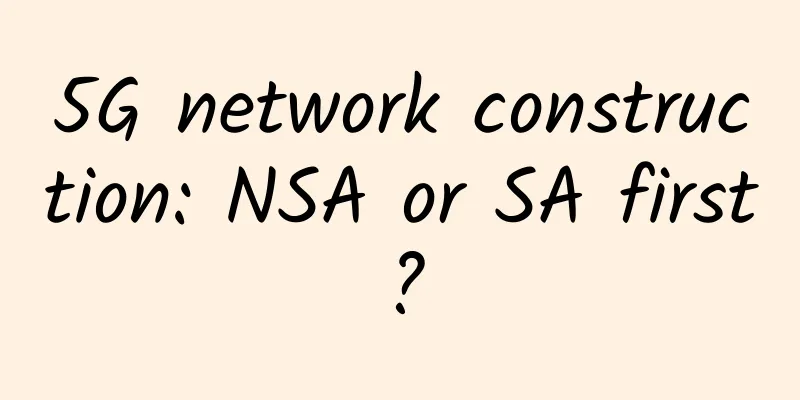Wi-Fi 6 Column | It turns out that you can understand the next generation of Wi-Fi in such an easy-to-understand way

|
Why is it called Wi-Fi 6? Each new Wi-Fi version brings new features and its acronym, like 802.11.ax, the Wi-Fi Alliance calls it Wi-Fi 6, which stands for the sixth generation of Wi-Fi. Wi-Fi 6 is the next generation of Wi-Fi in the journey of next-generation wireless technology innovation. What can we expect from Wi-Fi 6? Based on the advantages of Wi-Fi 5 (802.11ac), this standard further enhances the efficiency of spatial reuse through enhanced coding and scheduling methods, allowing each AP to communicate with more devices at the same time, allowing for a higher density of device deployment, lower latency, longer coverage, and higher speed. At the same time, its improvement in low power consumption can extend battery life, which is particularly friendly to battery-powered IoT devices. Wi-Fi 6 adds efficiency, flexibility, and scalability. This performance increase enables increased speed and capacity for the next generation of advanced applications, such as seamless mobile roaming, 4K or 8K video, high-definition collaboration applications, all-wireless offices, and IoT, even in high-density environments. We will soon feel the experience revolution brought by Wi-Fi 6 in conference venues with tens of thousands of people, high-density offices, wireless production, smart teaching, smart media, and digital scenarios of cities and enterprises. How does Wi-Fi 6 improve the experience? Wi-Fi 6 improves user experience through the following technical features, including:
Let's use traffic as an example to explain how the above technologies can improve the experience of Wi-Fi 6. Roads are like frequency bands to Wi-Fi, and frequency band resources are limited and fixed; vehicles on the road are like messages to Wi-Fi, and messages can be large or small, and the transmission speed can be fast or slow. 1024QAM QAM (Quadrature Amplitude Modulation) is a two-dimensional dot matrix modulation method, which converts the data signal "01" into radio waves. Wi-Fi 6 supports 1024QAM, which is 2 to the 10th power bit, a 25% increase over Wi-Fi 5's 256QAM (2 to the 8th power 8 bits). This is equivalent to optimizing the road, that is, making the lanes on this road as close as possible and increasing the number of lanes without causing traffic congestion. 256QAM 2 to the power of 8 bits MU-MIMO and OFDMA 1. OFDMA OFDMA (Orthogonal Frequency Division Multiple Access) divides the wireless channel into multiple sub-channels (sub-carriers) to form frequency resource blocks. User data is carried on each resource block instead of occupying the entire channel, so that multiple users can transmit in parallel at the same time in each time period. The OFDM solution of Wi-Fi 5 is to dispatch trucks according to orders, regardless of the size of the goods. Even if it is a small piece of goods, a truck is dispatched. This results in the carriages often being empty, which is inefficient and wastes resources. The OFDMA solution of Wi-Fi 6 will aggregate multiple orders and try to load the trucks fully, greatly improving transportation efficiency. OFDM sends one signal at a time 2. MU-MIMO MU-MIMO (Multi-User Multiple-Input Multiple-Output) allows the router to communicate with multiple devices at the same time instead of one by one. Wi-Fi 5's MU-MIMO allows the router to communicate with four devices at a time, and only supports downlink MU-MIMO. Wi-Fi 6 will allow the router to communicate with up to 8 devices at a time, and support both uplink and downlink MU-MIMO. To use a traffic analogy, this means that the road is expanded from a four-lane one-way road to an eight-lane two-way road. At the same time, multiple devices are no longer like many vehicles waiting in line to exit from one exit. They can exit/enter from different roads simultaneously and efficiently, instead of queuing up one by one, which greatly improves efficiency. Only sequential communication 3. Comparison between OFDMA and MU-MIMO Both of them improve the wireless access density for multiple users' uplink and downlink, but in fact, there are still big differences between the two. Although both are parallel transmission solutions, they are neither iterative nor competitive, but complementary. Their technical principles are different, and their applicable scenarios are also different. The specific use needs to be determined according to the application type of the service. BSS-Color BSS (Basic Service Set) adds a 6-bit identifier to distinguish the BSSs of the same channel of different APs. The 6-bit is used in the message header. When an AP receives a message that is not its own, it does not need to decapsulate the entire packet before discarding it as before. It can discard it as long as it decapsulates the physical guide code to avoid conflicts. This makes the use of channel resources more orderly and more certain, thereby greatly improving the overall performance of the system in dense environments. Using a traffic analogy, it is equivalent to dividing vehicles in the same lane into independent and non-interfering three-dimensional lanes in space according to different transmission purposes, effectively performing spatial reuse. TWT TWT (Target Wakeup Time) allows the AP to plan communications with devices and negotiate when and how long to wake up to send/receive data. Terminals can be grouped into different TWT cycles, reducing the time required to keep the antenna powered on to transmit and search for signals, which means reducing battery consumption and improving battery life performance, while also reducing the number of devices competing for wireless resources at the same time after waking up. In the future, smart water meters, smoke detectors, access control in smart building scenarios, machine tools, AGVs, in-and-out scanning devices, and other types of smart devices in smart factory scenarios can all access Wi-Fi. Thanks to TWT, each device can establish a "wake-up protocol" separately. The terminal device will only enter the working state after receiving its own "wake-up" information, and will be in a dormant state for the rest of the time. This makes it possible for some IoT devices that require high-bandwidth communication, such as smart office equipment. TWT can save up to 7 times the battery power consumption. But the technology won’t help all devices, for example laptops need constant internet access and are therefore unlikely to benefit too much from this feature (perhaps more when going to sleep). The technology is more beneficial for small, low-power devices that occasionally need to update their state. Therefore, TWT technology demonstrates Wi-Fi 6's determination to embrace the Internet of Things. Save 7 times of power consumption What capabilities does Wi-Fi 6 test Wi-Fi vendors? In summary, Wi-Fi 6 provides many technologies that can effectively improve the efficiency of the entire Wi-Fi network. However, each technology has a lot of room for free play, such as the application of OFDMA technology, how to plan the most suitable subcarrier size; when multiple users transmit at the same time, how to implement corresponding power control for multiple users to ensure that the signals of users in close proximity do not overwhelm users in distant locations, etc. For Wi-Fi 6 to achieve the best user experience, it is imperative that AI technology be introduced to adjust strategies in real time based on changes in the environment and application types of access terminals. This will be a stage for major manufacturers to demonstrate their strength. Ruijie Networks Wi-Fi 6+AI, stay tuned for the next article to learn more. |
<<: Wi-Fi 6 Column | How to build university networks in the 5G era (Part 1)
Recommend
RAKsmart August server flash sale starts at $30/month, VPS host starts at $1.99/month, new Hong Kong large bandwidth optional 100Gbps high-defense server
RAKsmart is a Chinese-run foreign hosting company...
5G news is coming! China Mobile has opened trial commercial services to 15 provinces: over 100 million users, no need to change to 5G phones
On October 14, at the "5G Message Ecosystem ...
Contabo: €2.99/month KVM-4GB/100G SSD/16TB/Germany, the United States, Japan and other data centers
Contabo, a long-established German hosting compan...
[Black Friday] DediPath offers 35% off on all VPS/Hybrid Servers starting from $1.2/month, multiple data centers available in Los Angeles/San Jose, etc.
I searched and found that DediPath's previous...
Here are 24 C++ pitfalls to avoid.
[[396092]] This article is reprinted from the WeC...
Huawei: Continuous innovation to build a fully connected, intelligent world
Huawei's 16th Global Analyst Conference opene...
Wi-Fi 7 is on the way, is there a market for Wi-Fi 6E in China?
On January 7, US time, the Wi-Fi Alliance launche...
DMIT: $100/year Triple Network CN2 GIA-2GB/40GB/2TB/Los Angeles CN2 GIA
Today, many friends are sharing the last promotio...
What is number portability? What are the benefits? Is it necessary to port your number?
These days, the topic of "number portability...
Riverbed officially releases SaaS solutions for on- and off-cloud
The hottest word in the technology field in 2016 ...
Ten Tips to Simplify Fiber Optic Cable Installation
Installing fiber optic cable is a complex and tim...
iWebFusion: Los Angeles VPS starting at $9.38 per month, 4GB memory package, upgradeable to 10G bandwidth
iWebFusion (or iWFHosting) is a long-established ...
A brief discussion of the TCP protocol, finally understand what it does
[[276056]] 1. What is TCP and what does it do? TC...
66 Cloud offers 15% off monthly payment and 66% off annual payment. Hong Kong CN2 GIA monthly payment starts at 34 yuan, and US CN2 GIA monthly payment starts at 38 yuan
666clouds recently launched a three-year annivers...
How to use Layer 3 switches to build enterprise VLANs
The expansion of enterprise scale has led to the ...









